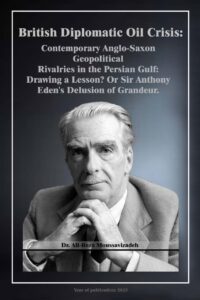The British Imperial Establishment, Post Imperial Era, and the ‘Churchillian’ World View, 1945-2016. (Adjustments & Challenges in Contemporary British Diplomatic Strategy)
60
powers
were transferred to Indians. By this stage Indians, after assisting in
Britain’s war effort, and, after
hearing widespread discussion of national
self-determination at the Versailles Conference in Paris, were
demanding
an equal status with the Dominions. British repression, as at Amritsar in
1919 when hundreds
of Indians were shot, only fanned Indian discontent
higher. Gandhi was helping to frustrate British
administration by leading a
non-co-operation campaign and schemes of civil disobedience. The
British
government made further concessions in 1935, but still not sufficient to
satisfy Indian demands.
Similar status to the white settlement countries was
simply promised, whereas Indians felt it should be
instituted forthwith. The
British government, however, was still able to withstand a
concerted
opposition from Indian nationalists although the demand for independence
had been growing
through the twentieth century. By promising separate
representation to Muslims, and other groups, the British
were able to
forestall independence, with Hindus and Muslims generally unable to co-
operate fully in
their demands for political power. Yet the Indians, although
divided, were making the British presence
difficult to maintain. By their
nationalist strivings the Indians had pushed the course of
political
development faster than most British authorities had ever contemplated.
The Indians were
asserting that they too could exercise a full political
maturity equally with the white settlers of the
British Commonwealth.
Pages: 1 2 3 4 5 6 7 8 9 10 11 12 13 14 15 16 17 18 19 20 21 22 23 24 25 26 27 28 29 30 31 32 33 34 35 36 37 38 39 40 41 42 43 44 45 46 47 48 49 50 51 52 53 54 55 56 57 58 59 60 61 62 63 64 65 66 67 68 69 70 71 72 73 74 75 76 77 78 79 80 81 82 83 84 85 86 87 88 89 90 91 92 93 94 95 96 97 98 99 100 101 102 103 104 105 106 107 108 109 110 111 112 113 114 115 116 117 118 119 120 121 122 123 124 125 126 127 128 129 130 131 132 133 134 135 136 137 138 139 140 141 142 143 144 145 146 147 148 149 150 151 152 153 154 155 156 157 158 159 160 161 162 163 164 165 166 167 168 169 170 171 172 173 174 175 176 177 178 179 180 181 182 183 184 185 186 187 188 189 190 191 192 193 194 195 196 197 198 199 200 201 202 203 204 205 206 207 208 209 210 211 212 213

